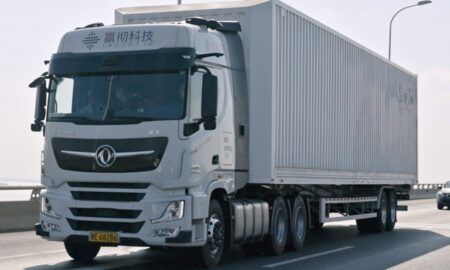Leading automotive technology supplier Continental is expanding its global automated driving development efforts with testing on public sections of Germany autobahn network, with the goal of having a production-ready fully-automated system available to automakers by 2025.
The wealth of data currently being collected in real traffic conditions on the German highway network by Continental’s development team will be used to further enhance sensors, vehicle computers, operating systems, and software for automated driving, that will be used in the company’s other R&D programs in Japan, China, the USA and Germany.
Continental is currently trialling its Cruising Chauffeur highly-automated driving system, which is equivalent to SAE Level 4 autonomy, and still requires some degree of driver input and awareness. The system takes data from multiple cameras, as well as radar and lidar sensors, and combines the information to create its environment model for the vehicle’s control system.
Continental is continually upgrading the Cruising Chauffeur platform so the technology offers the best possible levels of reliability by day and night, in rain or fog, and with different amounts of surrounding traffic. Having concentrated on highly-automated driving on the autobahn network in recent years, the company is now embarking on the next steps, which will involve testing on more complex highway sections. The planned routes include, not only sections of the autobahn and its intersections, but also arterial highways and city routes for subsequent tests.
In addition to the development of production-ready highly-automated driving systems, Continental is also working toward the adoption of fully-automated autobahn driving technologies to SAE Level 5 by 2025. While highly-automated autobahn driving is designed to allow drivers to temporarily focus their minds on other activities, for fully-automated operations it will be possible for sections of the route to be completed without any driver input at all.
With its Urban Mobility Experience test platform, Continental is currently trialling systems for driverless automated taxis for city deployments, with the company’s long-term goal of being able to offer seamless, automated mobility without accidents in both motorway or urban environments.
“As a technology company, we want to increase acceptance of automated driving. This means that, on the road to production readiness, we constantly put our systems to the acid test, investigating everything from the bit to the byte, from the lens to the chip,” said Ralph Lauxmann, head of systems and technology in Continental’s chassis and safety division.
“Automated driving will not only help car drivers save time. It will also lead to greater safety in road traffic and will reduce emissions. This is why we are working on all forms of automated and autonomous driving, on the autobahn, in the city and when parking. On highways, our systems have to cope with traffic that crosses the vehicle’s path, the vastly differing edges, and, just like in the city, with pedestrians and cyclists. This places high demands on our systems.”




